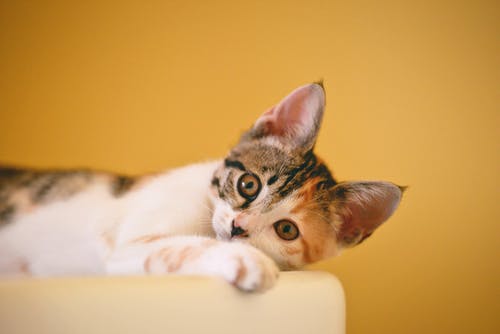The importance of grooming is not lost on pet owners. Beyond the pleasing aesthetics, grooming practices contribute significantly to your pet’s overall health and play a primary role in preventing various health problems. However, regarding breed-specific grooming requirements, things can get a tad complex. This comprehensive guide will explain why certain breeds require special grooming techniques and how to keep your pet in peak condition.
Understanding the Importance of Regular Grooming
Starting with an initial understanding of pet grooming, it’s a wholesome hygiene and cleaning routine involving brushing, combing, nail clipping, and general body inspections. Regular grooming is crucial for pet health as it keeps your pet free of external parasites, checks for any skin abnormalities, promotes healthy fur and acts as a bonding time between you and your pet.
Professional grooming is a beneficial option for pet owners, especially for breeds requiring more complex grooming techniques. These grooming experts know what’s best suited for different breeds and can advise on maintaining the grooming routine at home.
Different Coat Types: An Overview
Different breeds of pets come with different types of coats. Each of these coat types has unique characteristics that influence their grooming requirements. Here are the five main types:
1. Short Hair
Short-haired coats are typically smooth and can be found in breeds like Beagles and Dachshunds. While these coats are relatively low maintenance, they require regular brushing to remove dead hair and stimulate the skin. Short-haired breeds are often more susceptible to environmental factors like cold weather and sunburn.
2. Long Hair
Pets with long hair, such as Yorkshire Terriers and Persian Cats, have beautiful, flowing coats that require regular daily grooming. Neglecting to the groom can lead to mats and tangles, which can cause discomfort and skin issues. Long hair pets may also require trimming to keep their coat manageable.
3. Curly Hair
Curly-haired pets like Poodles and Bichon Frises have unique grooming requirements. Their curly hair is prone to tangling and matting if not maintained correctly. Regular brushing and professional grooming are usually required to keep their coats in good condition. These breeds may require special brushes to go through their tight curls.
4. Wired Hair
Dog breeds like Scottish Terriers and Wirehaired Pointing Griffons have a rough and wiry coat. This coat type is double-layered, with a soft undercoat beneath the harsh, wiry outer coat. Wired hair pets require a technique known as hand stripping, where the loose, dead hair is plucked to promote new hair growth. Professional groomers often do this.
5. Double Coat
Like retrievers and huskies, pets with a double coat have a dense undercoat underneath a layer of longer guard hairs. The undercoat serves as insulation, protecting the pets against extreme weather conditions. Double coat breeds require regular brushing to prevent mats and to remove loose hairs, especially during shedding seasons.
All these different types of coats require understanding and unique grooming techniques. Recognizing your pet’s coat type can help tremendously in maintaining their health and overall well-being.
Specific Grooming Needs for Different Breeds
Breed-specific grooming refers to techniques tailored to cater to the needs of different breeds. For instance, a Poodle may require detailed hairstyling, while a Beagle, known for its short hair, may need more skincare due to its predisposition to skin conditions.
Moreover, breeds like Dalmatians and German Shepherds are seasonal shedders and require enhanced grooming during shedding seasons. Meanwhile, dogs with long, ever-growing hair, like Shih Tzus, need frequent haircuts for functionality and comfort.
A Glimpse into Pets’ Skin Conditions
Skin conditions in pets have a significant influence on their grooming needs. Allergies, dermatitis, and skin infections are common issues that can complicate grooming and might require a specific treatment plan. Consulting a vet or professional groomer is paramount in areas like these.
For routine care, a part of your pet’s grooming schedule should include puppy health checkups. These routine examinations allow vets to guide any special grooming needs stemming from skin illnesses. They will also advise on the best skin-friendly grooming products to use in such circumstances.
Role of Grooming Tools
Using the right tools for your pet’s hair type is crucial in breed-specific grooming. Brushes, clippers, combs, and nail trimmers are commonly used tools.
However, some hair types need particular tools. For example, slicker brushes suit dogs with medium to long hair, while bristle brushes are excellent for short-haired and smooth-coat dogs.
Maintaining a well-groomed appearance for your pet goes beyond using the right tools. It should also entail frequent visits to grooming salons or browsing a website offering pet grooming aids and advice.
Seasonal Impact on Grooming Needs
Different climate conditions and changing seasons directly influence a pet’s coat and, subsequently, their grooming needs. Cooler weather may cause thickening of the coat in many breeds, making it more prone to matting and tangling. Alternatively, excessive heat and humidity can escalate skin problems in summer.
Incorporating puppy shots into a pet’s healthcare routine is valuable, especially when considering flea and tick prevention. Routine vaccinations will not only ensure your pet is shielded against various diseases, but they will also play a part in a holistic pet grooming approach. This is particularly crucial in the warmer months when occurrences of pet parasites might increase. Using specialist, vet-recommended products for parasite prevention forms another layer of defense here.
Conclusion
In retrospect, it’s clear that breed-specific grooming is not a luxury. It’s necessary, entwining several factors like a pet’s overall health, hair type, underlying skin conditions, and natural environment. Knowledge of these different components will help you navigate the grooming process more effectively and ensure that your furry friend remains in optimal health. Whether you choose professional or home grooming services, remember it all starts with understanding your pet’s unique needs.




